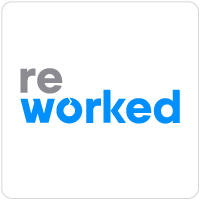How to Start Building an Intelligent Digital Workplace, Now
Do leaders in your company realize they make too many assumptions about technologies that need to be in place before using AI? According to Accenture’s Technology Vision 2019 survey of 6,672 business and IT executives, you could be ready to move forward with AI now.
Accenture’s findings showed most business and IT executives (94%), already started implementing AI for an intelligent digital workplace.
What’s motivating leaders to implement AI so quickly?
Executives who responded to Accenture’s Technology vision 2019 said “the pace of innovation in organizations accelerated or significantly accelerated over the past three years due to emerging technologies…”
Accenture also found 63% of executives expect AI will create net job gains in their organization in the next three years.”
These findings mean business and IT executives know their success depends on how quickly they implement AI. To achieve this, they prioritize AI and leverage current technologies.
Quantifying Job Growth After Prioritizing AI
Accenture’s Vision 2019 also forecasted the impact of AI on jobs:
“Accenture estimates that if companies invest in AI and in human–machine collaboration at the same rate as top-performing businesses, they could boost revenues by 38 percent between 2018 and 2022 (as much as 50 percent in the consumer goods and health sectors) and lift global profits by a total of US $4.8 trillion by 2022 . . .”
Accelerating your plans for AI may be simpler than you think. What may surprise you is that many of the tools you need to accelerate your plan are right on your desktop.
For example, taking data analytics to another level with machine learning results in building the capability of expanded knowledge.
Expanded knowledge can be used by robot “assistants.” People collaborate with robot assistants to make more informed decisions that can grow revenue and jobs.
The is commonly referred to as a human+ machine approach.
The human+ machine approach was discussed in a December, 2018, CMS Wire article by Miguel Valdes Faura’s who wrote about digital workplace and robotic process automation.
Faura’s article suggests we expand our current definition of collaboration and get used to the idea that “people and robot assistants can work together.”
The upside for companies who embrace people and robot assistants working together is how quickly their intelligent digital workplace efforts accelerate.
Progress at this pace can only happen when leaders move implementing AI to the top of the technology priority list.
Next Steps After Making AI a Priority
When AI moves to the top of the priority list, companies become open to combining AI with many existing technologies–including calendars and email.
The job growth opportunity happens when, people learn new skills to help them work differently (i.e. with robot assistants). Yes, these people need training to help them learn how to work differently and experience job growth.
When your leaders train employees to collaborate with robot assistants, employees can achieve new value based on their ability to productively interact with AI.
All this talk about combining people with AI, robot assistants and machine learning means, the pace of implementing enterprise-level technology will only continue to accelerate.
This begs the question, why not use these emerging technologies to position your company for success?
Strategies Leaders Can Take to Incorporate AI Now
Start using AI with existing technology investments. Below are a few questions to help you get started:
- What is my company already doing with our social, mobile analytic and cloud tools?
- How can humans leverage these technologies and collaborate with AI to expand our knowledge and capabilities?
- If we were to combine human collaboration and AI, what new skills would be people need to taught?
- How can HR and IT work more closely?
As you answer these questions, new actions to take will surface, and your AI journey begins.
“4 Quick Win” Opportunities to Help Companies Accelerate the AI Journey
Your team has several opportunities to leverage Social and Mobile technology. This can increase communication, connection and collaboration in an intelligent digital workplace. Consider the suggestions below as a starting point:
- Start with your hiring and onboarding processes. Collaborate with IT more closely to use AI for attracting and hiring talent.
- Promote technology adoption by giving employees an opportunity to review new technology via social media and mobile.
- Leverage social and mobile technology to communicate success stories as new technologies are implemented.
- Explore how humans can collaborate with AI to analyze complex data and make decisions more quickly.
Final Thoughts
Every company has access plenty of tools that, when combined with AI results in an intelligent digital workplace. The take-away here is to reimagine what collaboration means in the new world of work.
What lessons about the AI journey do you want to share with others?
What advice can you share about how can leaders become intelligent digital workplace trailblazers?
Please post your comments and questions below.

